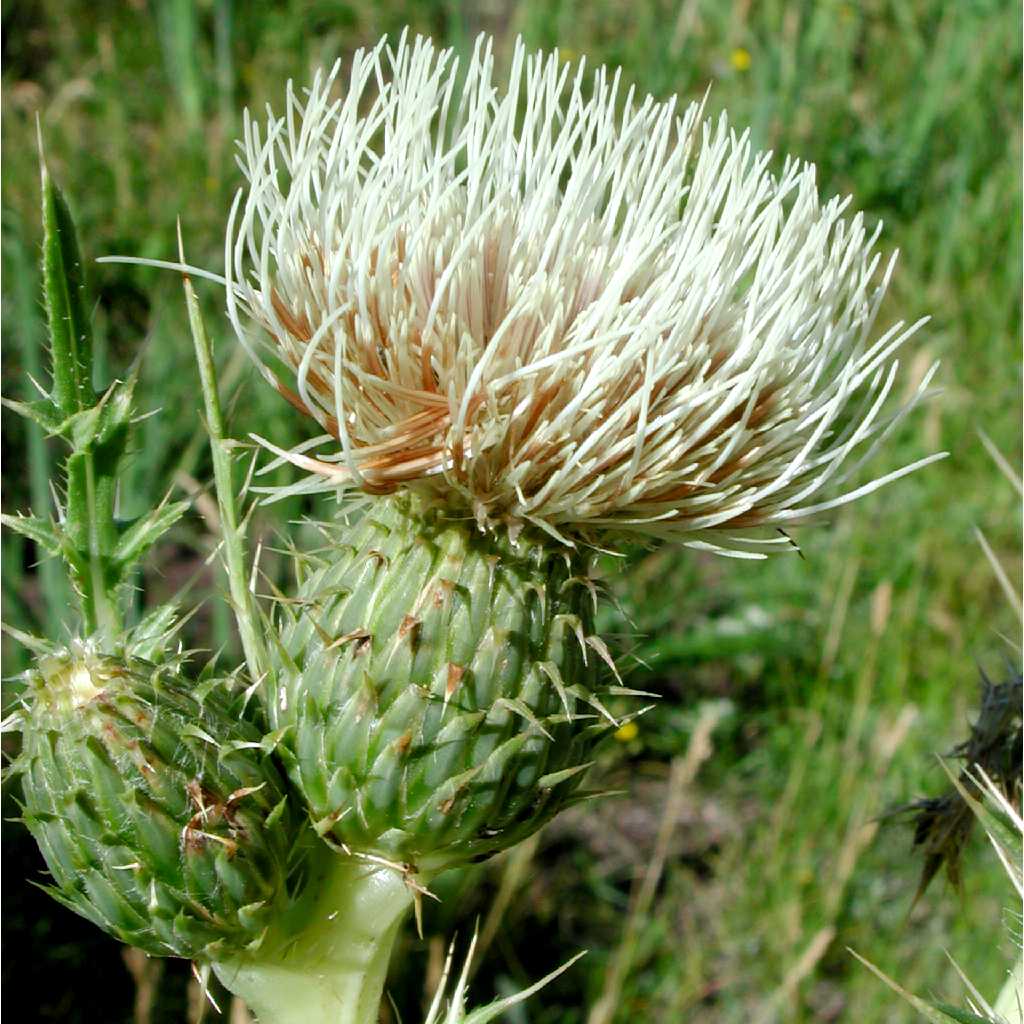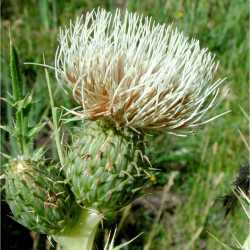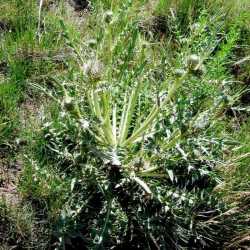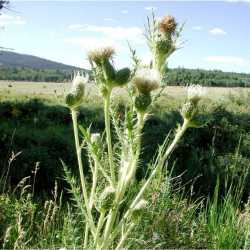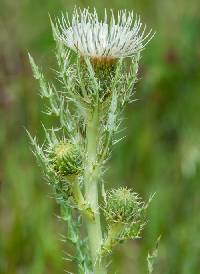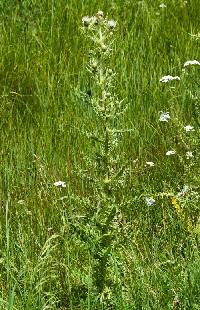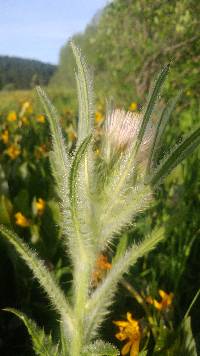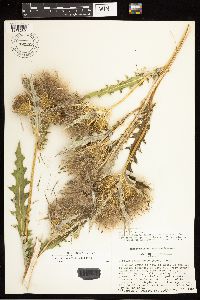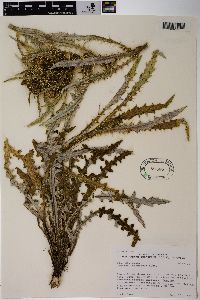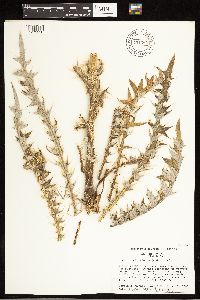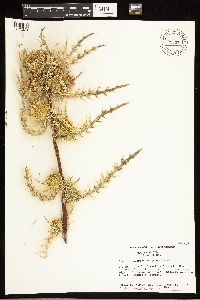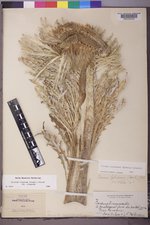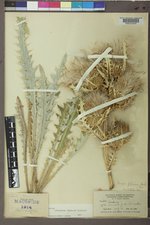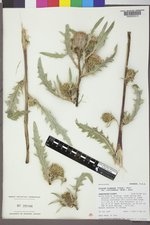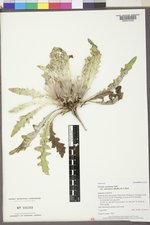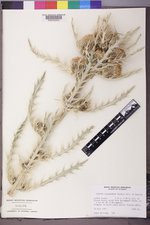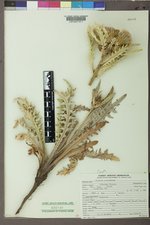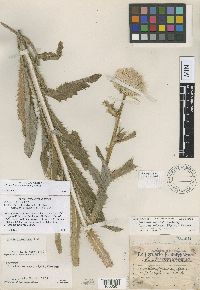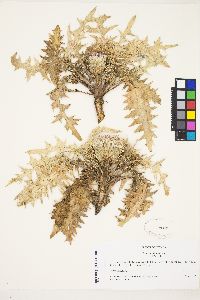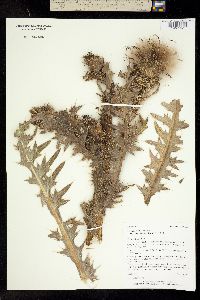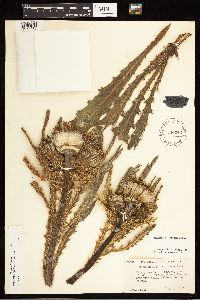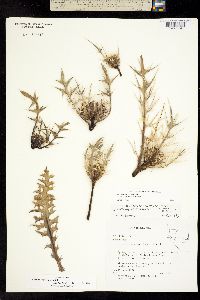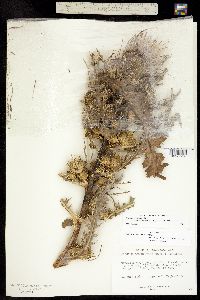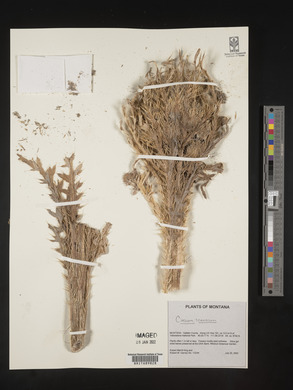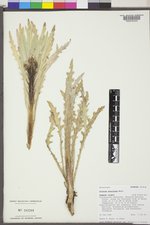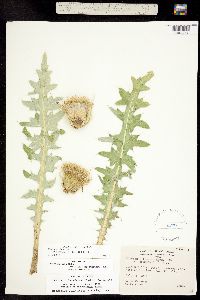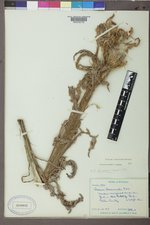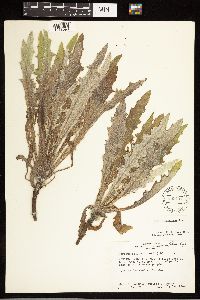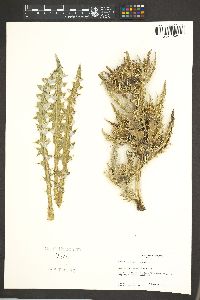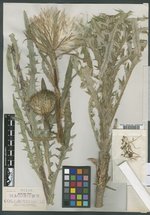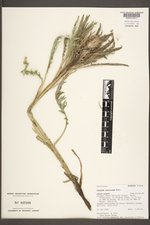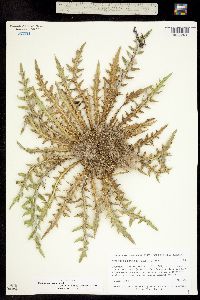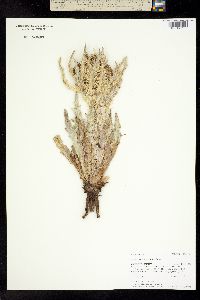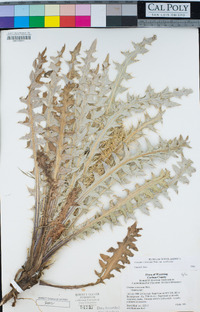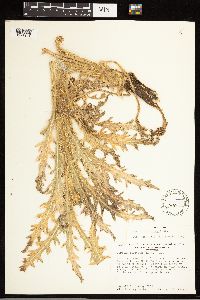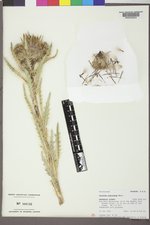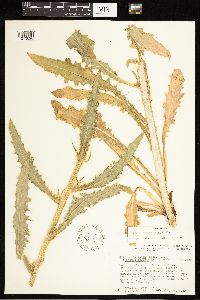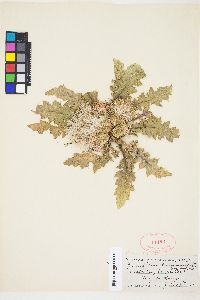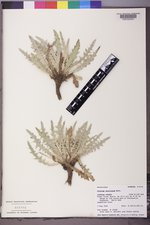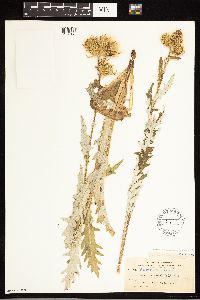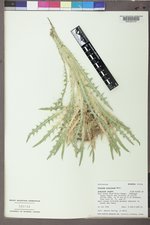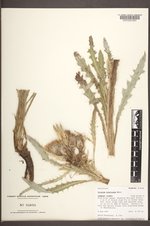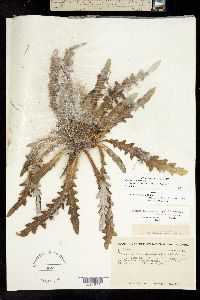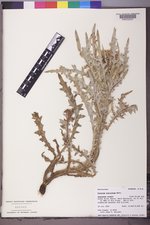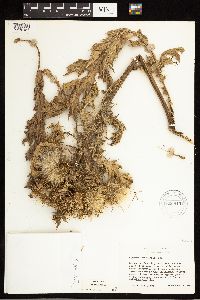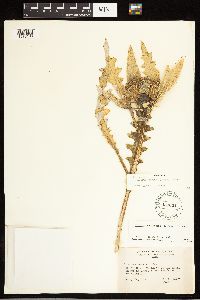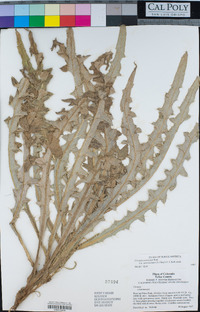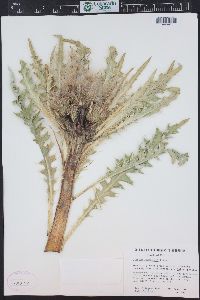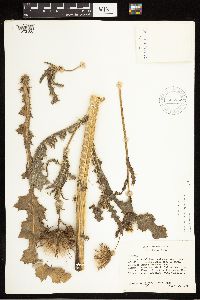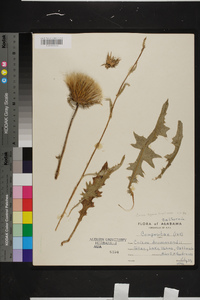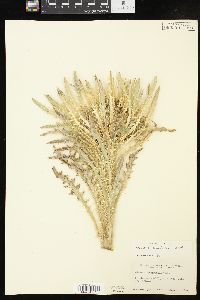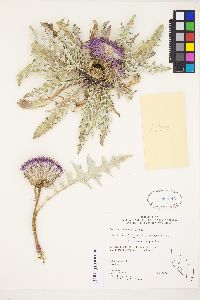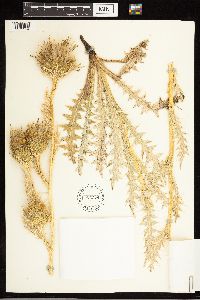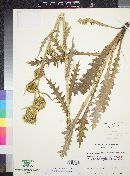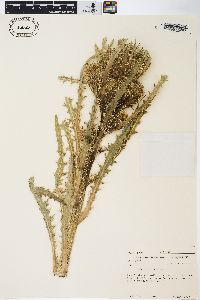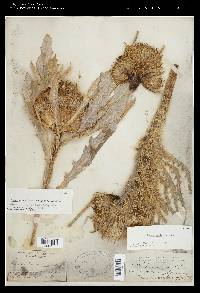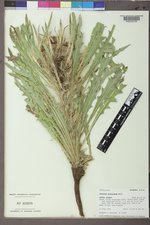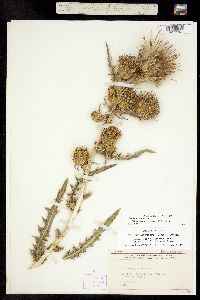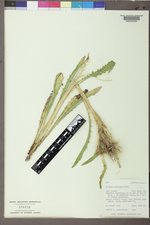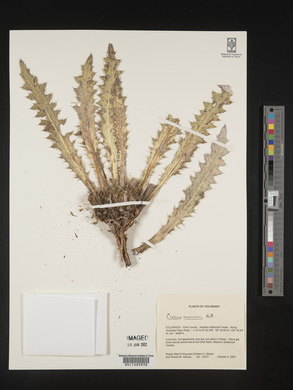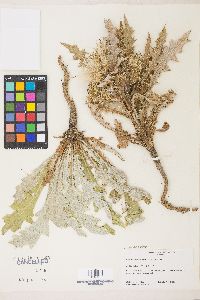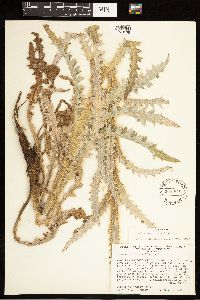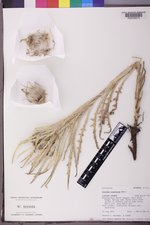
|
|
|
|
Family: Asteraceae
elk thistle, more...Meadow Thistle
[Cirsium butleri Rydb., moreCirsium congdonii R.J.Moore & Frankton, Cirsium erosum Cockerell ex Daniels, Cirsium kelseyi Rydb., Cirsium lacerum Rydb., Cirsium magnificum Rydb., Cirsium minganense Vict., Cirsium oreophilum Rydb., Cirsium x erosum] |
Biennials or monocarpic perennials, acaulescent, short caulescent and forming low rounded mounds, or caulescent and erect, 0-200 cm; taprooted. Stems absent, or with crowded branches from near base, or simple and erect, often fleshy and thickened, glabrous to thinly gray- tomentose, often villous with septate trichomes. Leaves: blades linear to elliptic, 5-20 × 3-7 cm, plane to strongly undulate, unlobed or shallowly to deeply pinnatifid, lobes linear-lanceolate to broadly triangular, closely spaced, spreading, spinose-dentate or lobed, main spines slender to stout, 2-15+ mm, abaxial faces glabrous or thinly to densely tomentose, ± villous with septate trichomes along the veins, glabrate or trichomes persistent, adaxial thinly arachnoid tomentose and soon glabrescent; basal often present at flowering, sessile or winged-petiolate; cauline many in caulescent forms, reduced distally or not, winged-petiolate or distal sessile; distal often well developed, similar to proximal, sometimes much narrower and bractlike. Heads 1-many, erect, borne singly or often densely crowded in spiciform, racemiform, or subcapitate arrays, especially in acaulescent or short-caulescent plants, often closely subtended by distalmost leaves. Peduncles 0-10 cm, leafy-bracted. Involucres ovoid to hemispheric, 2-4 × 1.5-6 cm, loosely arachnoid on phyllary margins or glabrate. Phyllaries in 5-10 series, imbricate, ovate or lanceolate (outer) to linear or linear-lanceolate (inner), margins (outer) entire or scarious-fringed, abaxial faces without glutinous ridge; outer and mid appressed, spines erect to spreading 0.5-13 mm; apices of mid and inner narrowed and scabro-denticulate or with expanded, erose-dentate tips, spineless or tipped with flattened spines. Corollas white or pale lavender to purple, 20-40 mm, tubes 7-24 mm, throats 4-12 mm (noticeably larger than tubes. , lobes 4-10 mm; style tips 3.5-8 mm. Cypselae light to dark brown, 4-6.5 mm, apical collars usually colored like body; pappi 17-35 mm, white to tan. 2n = 34, 36. Cirsium scariosum is a widely distributed complex of intergrading races distributed from southwestern Canada to northwestern Mexico. These plants range from acaulescent rosettes with a tight cluster of sessile heads to tall, erect, unbranched plants, or moundlike, more or less openly branched herbs. Acaulescent and caulescent plants sometimes occur in the same population. Members of this complex have been variously treated in the past. F. Petrak (1917) recognized ten species plus several subspecies for the taxa I am treating here as C. scariosum (in the broad sense). In floras, the names C. drummondii and C. foliosum have been widely misapplied to these plants (R. J. Moore and C. Frankton 1964). The latter two species, while clearly related to C. scariosum, have a range restricted mostly to Canada. Moore and Frankton (1967) attempted to bring order to the complex and recognized four species for plants that I include here in C. scariosum: C. acaulescens, C. congdonii, C. coloradense, and C. scariosum in the restricted sense. Moore and Frankton substituted the prior name C. tioganum for C. acaulescens. Unfortunately they did not extend their study widely enough and did not include some members of the complex in their investigations. S. L. Welsh (1982) proposed C. scariosum var. thorneae from Utah and lumped the various species recognized by Moore and Frankton within a highly polymorphic var. scariosum. After consulting with A. Cronquist and studying his manuscript treatment of Cirsium for the Intermountain Flora, D. J. Keil and C. E. Turner (1993) also accepted a broadly construed C. scariosum. Cronquist (1994) treated C. scariosum as an extremely variable species that included the four species recognized by Moore and Frankton plus the variety proposed by Welsh. Cronquist chose to not recognize infraspecific taxa. In the present treatment I have examined these plants from a biogeographic perspective with the goal of discerning regional patterns of variation. The large number of specimens available has allowed me to examine distributional patterns in relation to the topography and biogeographic history of the regions where this species occurs. My field studies also have provided me with observations that help to explain some of the anomalous specimens represented in herbaria. Although the variation within an |
|
|
|

